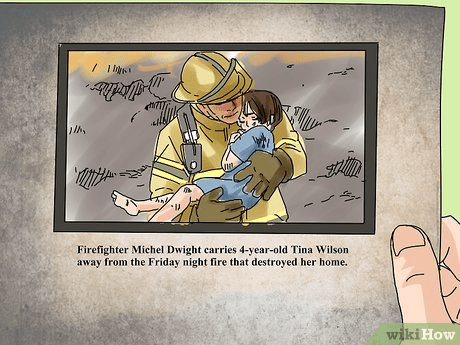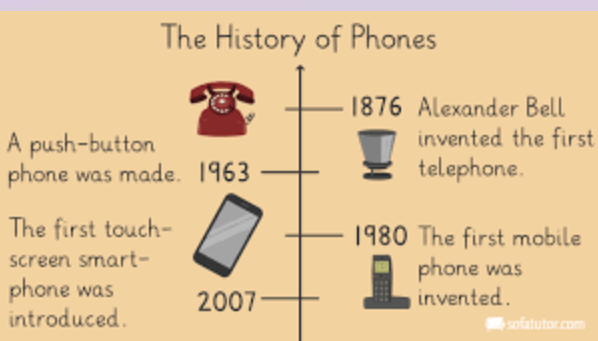When someone gets hurt or very sick, paramedics are often the first to help. They rush to people who need care and do their best to keep them safe. Paramedics travel in ambulances, which carry important tools like bandages and oxygen tanks. They use these tools to help people breathe, stop bleeding, or stay calm until they get to the hospital. Some paramedics work during the night, while others work during the day. They wear uniforms that help people know who they are. Paramedics also talk kindly to people so they don’t feel scared. Even though their job can be hard, paramedics make a big difference by helping people when they need it most.
What is the central idea of the passage?
A. Paramedics drive ambulances to many different places each day.
B. Paramedics wear uniforms that show who they are to others.
C. Paramedics help people who are hurt or sick during emergencies.
D. Paramedics work at night and during the day to earn money.
C. Paramedics help people who are hurt or sick during emergencies.
Communities love first responders such as paramedics and EMTs. Even though paramedics have more training than EMTs, both have important jobs when people are hurt or sick. EMT stands for Emergency Medical Technician. EMTs and paramedics both ride in ambulances and rush to help during emergencies. Examples of emergencies include car accidents and falls. Also, they both know how to give first aid, use medical tools, and keep people calm. Sometimes, both wear the same uniforms and work long hours together. They can work 40 hour weeks! Even though their jobs are a little different, paramedics and EMTs share the same goal—to care for people who need help fast.
Which detail could be used to create a summary of this passage?
A. Paramedics and EMTs both give first aid.
B. Falls are a type of accident.
C. People in communities love first responders.
D. EMT stands for Emergency Medical Technician.
A. Paramedics and EMTs both give first aid.
A long time ago, there were no paramedics like we have today. In the early 1900s, police officers and firefighters were the ones who took sick or hurt people to the hospital. They did not have much medical training. In the 1960s, doctors began to see the need for people who could give care before reaching the hospital. By 1970, cities started training the first paramedics to handle emergencies. They learned how to give medicine, use special tools, and help people breathe. In 1972, a TV show called Emergency! helped more people learn about what paramedics do. Over the years, new laws and better equipment made their jobs safer and faster. Today, paramedics are highly trained and ready to help anyone in need.
What is the text structure of the passage?
A. description
B. compare and contrast
C. cause and effect
D. chronology
D. chronology
 What information does the photo of the airplane contribute?
What information does the photo of the airplane contribute?
A. It shows that airplanes have been around for 100 years.
B. It shows that airplanes used to be dangerous and now they aren't.
C. It shows that airplanes have changed and developed drastically.
D. It shows that people like to ride on airplanes for fun.
C. It shows that airplanes have changed and developed drastically.
Paramedics must stay calm and think clearly, even when things get tough. They often show great determination when helping others. This perseverance helps them keep working, even if the situation is scary or tiring. Paramedics never give up when someone’s life is in danger.
What does the word perseverance mean as it is used in this paragraph?
What does the word perseverance mean as it is used in this paragraph?
A. rest
B. confusion
C. determined
D. anxious
C. determined
Paramedics have been around for 55 years in America. They are important first responders. Paramedics work hard to learn how to help people in emergencies. They take classes to study how the body works and how to treat injuries. During training, they practice using medical tools like stethoscopes and stretchers. Some also learn how to drive an ambulance safely through traffic. Ambulances can go 70-80 miles per hour! Paramedics must learn to stay calm under pressure, so they practice making quick decisions. After finishing their training, paramedics must pass a big test to show they are ready to help others. Many keep learning new skills even after they start working. All their training helps them be prepared to save lives when every second counts.
Which relevant detail best supports the central idea that paramedics must train hard to be useful?
A. "Paramedics have been around for 55 years in America."
B. "Paramedics must learn to stay calm under pressure, so they practice making quick decisions."
C. "Ambulances can go 70-80 miles per hour!"
D. "They are important first responders."
B. "Paramedics must learn to stay calm under pressure, so they practice making quick decisions."
People call paramedics when someone is hurt or very sick because they know what to do in an emergency. Paramedics train for many hours so they can stay calm and make quick choices. Because they have special skills, they can give medicine, stop bleeding, or help someone breathe again. Sometimes, they even work in bad weather or heavy traffic to reach people faster. As a result of their hard work, many lives are saved every day. People feel safer knowing paramedics are always ready to help. Because of their care and training, paramedics make a big difference in their communities.
What sentence best describes the text structure the author uses in this paragraph?
A. The author lists the equipment paramedics use each day.
B. The author describes the effect of paramedics’ actions during emergencies.
C. The author explains the impact of paramedics working in traffic.
D. The author shows the chronology of how paramedics’ jobs have changed over time.
B. The author describes the effect of paramedics’ actions during emergencies.

How does the caption of the illustration help you understand the impact of the firefighter on the girl?
A. It shows that the firefighter and the girl were friends before the fire.
B. It tells that the firefighter works every Friday night.
C. It explains that the girl’s house was rebuilt after the fire.
D. It shows that the firefighter helped save the girl from a dangerous fire.
D. It shows that the firefighter helped save the girl from a dangerous fire.
Paramedics must sometimes deal with chaos when they arrive at an accident. There may be people shouting, cars stopped in the road, and flashing lights all around. Even with so much happening, paramedics must stay focused.
What does the word chaos mean as it is used in this paragraph?
A. calmness
B. quietly
C. peace
D. disorder
D. disorder
When emergencies happen, paramedics must stay calm so they can help people safely. Paramedics can go anywhere. They often arrive at scenes where people are scared, hurt, or confused. A calm paramedic can think clearly and make the right response to any problem. They talk in quiet voices and move quickly but carefully. Sometimes, paramedics work in loud places with flashing lights and sirens, which can make it hard to focus. They may also have to carry heavy equipment or ride in an ambulance for many hours. Even when things get stressful, paramedics take deep breaths and remember their training. Staying calm helps them comfort others and make smart choices. Because of their calm response, paramedics can bring peace and care when people need it most.
What central idea can the reader infer from the passage?
A. Medical emergencies only happen in specific places.
B. Bright lights and loud sirens are too much of a distraction for paramedics.
C. Paramedics ride in ambulances for many hours each day.
D. Remaining calm helps paramedics perform better.
D. Remaining calm helps paramedics perform better.

How does the timeline add meaning?
A. It tells how much people loved the phone very much.
B. It tells when Alexander Graham Bell started to think about creating the telephone.
C. It tells who created the first touchscreen smartphone.
D. It tells when the first telephone was invented.
D. It tells when the first telephone was invented.
Paramedics use many tools during emergencies. One important tool is a stretcher, or bed, that can move patients safely. They use it to lift people who are hurt and carry them to the ambulance. The stretcher helps keep the person still while they are being moved. This makes it easier for the paramedics to help without causing more pain.
What does the word stretcher mean as it is used in this paragraph?
A. bed
B. tool
C. vehicle
D. chair
A. bed